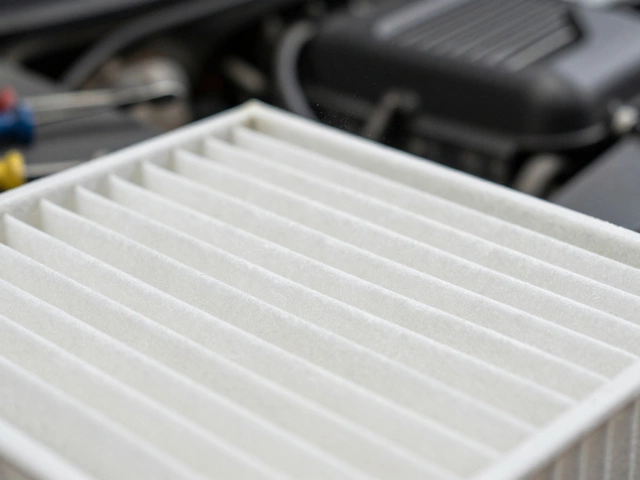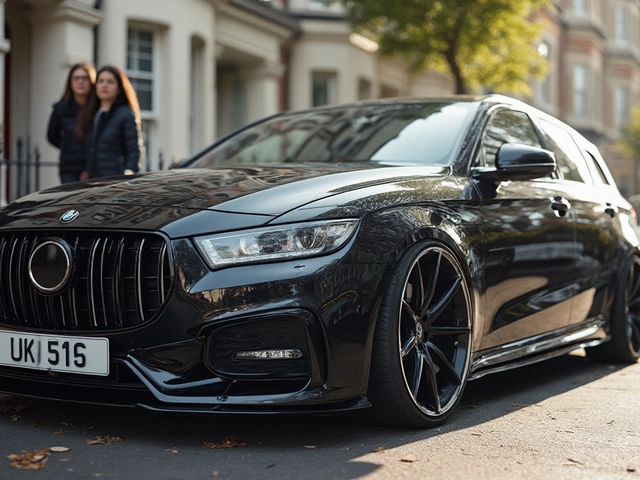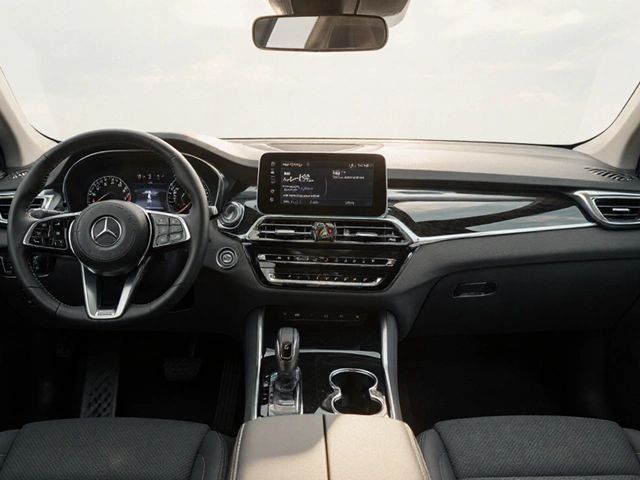Window tinting has become a popular way to not only add a touch of sleekness and style to vehicles but also to enhance privacy and protect interiors from the harsh sun. When it comes to choosing a tint, many wonder just how dark they should go. The darkest window tint provides impressive benefits, from shielding against UV rays to ensuring that your car interior remains cooler during those scorching summer days. However, it's essential to recognize that tinting isn't merely a matter of preference but also one of legal compliance and practical application.
Various tint levels offer different advantages, and while the darkest films are often desired for their maximum privacy and protection, there are regulations to consider. Delving into the options and understanding the implications can help you make a well-informed decision that suits both your vehicle and your lifestyle needs. Getting the perfect balance between aesthetics and functionality can transform your car into a sanctuary from the outside world.
- The Spectrum of Window Tint Darkness
- Legal Implications of Tint Darkness
- Benefits of Dark Tint
- Installation Tips for Optimal Results
- Maintaining Your Tinted Windows
The Spectrum of Window Tint Darkness
Stepping into the world of window tint can be like exploring a vast color palette, with options ranging from the most subtle shade to the most opaque film. The spectrum of tint darkness is measured by the Visible Light Transmission (VLT) percentage, which represents the amount of light that can pass through the window. A higher VLT percentage indicates lighter tint, while a lower percentage corresponds to a darker tint. For instance, a car with a 70% VLT tint will allow 70% of light to enter, providing more visibility both inside and out, compared to a 5% VLT, which allows only a sliver of light and is often referred to as 'limousine tint' due to its high level of privacy.
The variety of tints available on the market caters to different tastes and functional needs. While some vehicle owners prefer lighter tints for a more understated look, others opt for the darkest tints for a combination of style, UV protection, and enhanced privacy. It is crucial to be aware, though, that different states have different laws regarding how dark you can go, especially on the front and side windows, to ensure the driver maintains sufficient visibility at night and in poor weather conditions.
"The right window tint can significantly reduce glare and heat inside the car, enhancing comfort while driving," notes automotive expert Jeremy Clarkson.
Beyond aesthetic preferences, the decision on tint darkness often boils down to practical considerations, such as climate and daily use. Those who live in sunny areas might lean towards darker films for maximum heat reduction, whereas in cooler regions, lighter shades may suffice. Interestingly, newer technologies in tint films, like ceramic and carbon films, can block out the sun's heat without necessarily being dark, offering a great balance for those caught in indecision.
It's also fascinating that darker tints are not one-size-fits-all when it comes to different vehicle classes. While something like a car tint might see benefits from darker shades more significantly, larger vehicles such as SUVs and trucks have additional window surface area, which can necessitate different tint needs based on cabin space ventilation. This variability provides every car owner with a spectrum of choices that suits their unique situation.
| VLT Percentage | Description |
|---|---|
| 5% | 'Limousine' Tint - Very dark, used for maximum privacy |
| 20% | Dark tint, used for reducing glare and heat considerably |
| 35% | Moderate tint, balance between visibility and privacy |
| 50% | Light tint, allows more light while reducing glare |
| 70% | Very light tint, used mainly for UV protection without affecting visibility |
Ultimately, choosing the right window tint darkness is a personal choice influenced by several factors including climate, style preferences, and the typical driving environment. As you stand at the crossroads of aesthetic allure and functional utility, understanding the spectrum of tint darkness is the first step toward making your decision with confidence and clarity.
Legal Implications of Tint Darkness
The allure of the darkest window tint can draw car enthusiasts in, eager for that sleek, mysterious look. Yet, the moment you step into the realm of window tint selection, you have to consider more than just aesthetics. Legal restrictions on window tint darkness exist primarily to ensure safety for drivers and pedestrians alike. Each state or region often sets its standards, dictating how dark your automotive windows can legally be. These laws typically specify the Visible Light Transmission (VLT) percentage, meaning the amount of light that must pass through your windows. A lower VLT percentage signifies a darker tint, blocking more light.
The reasoning behind these regulations ties back to safety. If windows are too dark, they can impede a driver’s vision, especially at night or during harsh weather conditions. For law enforcement, extremely dark windows can pose a significant risk, preventing officers from seeing into vehicles during traffic stops. This balance between personal privacy and public safety becomes a key consideration. Violating tint laws can lead to fines and the requirement to replace or remove illegal tints, which can be quite an inconvenience for car owners.
It's crucial to stay informed about the specific regulations of your area. In the United States, for instance, states like California have stringent tinting laws, allowing a minimum of 70% VLT on front side windows, while others like Arizona permit much more lenient conditions. When considering what level of car tint to apply, consulting local Department of Motor Vehicles (DMV) guidelines or speaking with professional tinting services can provide clarity. This ensures that you remain compliant while still achieving your desired look.
An interesting perspective shared by the International Window Film Association (IWFA) reassures potential users that, "The key is finding that perfect balance between tinting for comfort and maintaining the driver’s visibility to reduce any potential hazards."
The use of certain materials in window films can also come under regulatory scrutiny, with metallic films sometimes interfering with electronic devices, such as cell phone signals or keyless entry systems. This makes it doubly important to check the specifications and compatibility of the window tint you choose. By ensuring you use a product that meets all legal requirements, you not only avoid unnecessary legal trouble but also support the longevity and functionality of your vehicle.
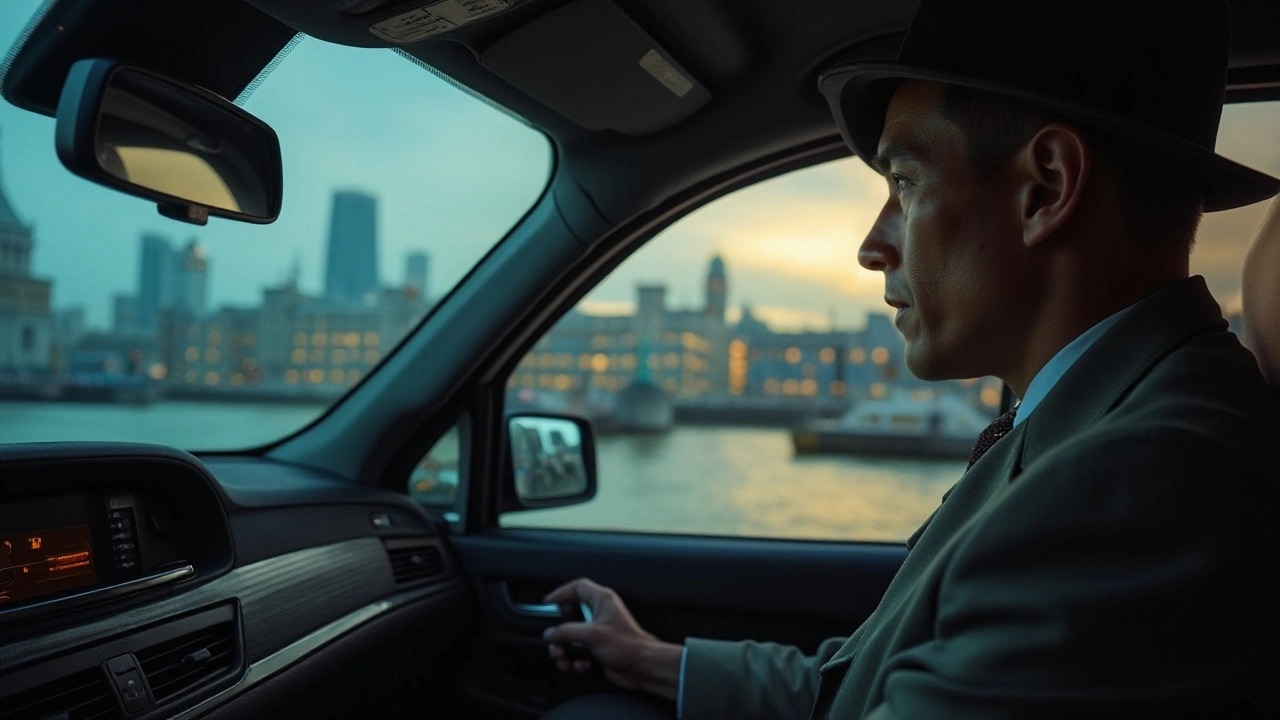
Benefits of Dark Tint
When it comes to enhancing the privacy and comfort of your vehicle, choosing the darkest window tint available can offer an array of compelling advantages that go beyond aesthetic appeal. One of the most immediate benefits is the increased level of privacy it provides. With a dark tint, prying eyes are kept at bay; this is particularly valuable if you often have valuables in your car or simply prefer a more secluded driving experience. Not only does it protect against unwanted attention, but it also contributes to a sense of personal security, making you less conspicuous to potential intruders.
In terms of protection, a dark tint acts as a significant guard against the sun's harsh ultraviolet rays. Prolonged exposure to these rays can cause damage not only to the car's interior fabric and materials but also pose a risk to your health over time. By filtering out harmful UV rays, dark tints help preserve the life of your car's interior by preventing fading and cracking, especially leather seats and dashboard materials, which are particularly susceptible. Moreover, dark tints can reduce heat buildup inside the vehicle, making your ride more comfortable and reducing the strain on your air conditioning unit.
Energy Savings and Comfort
On hot summer days, stepping into a car that's been sitting under the sun can feel like entering an oven. Dark tint significantly mitigates this discomfort. By effectively blocking substantial heat, your vehicle remains cooler, allowing the air conditioning system to work less vigorously, thus enhancing fuel efficiency. It's a smart choice not just for comfort but also for your wallet. An analysis by a report from the International Window Film Association demonstrated that window films can reduce up to 60% of heat transmission into car interiors. Such data underscores how the right tint can lead to tangible energy savings.
"Tinted windows offer more than just style; they enhance the car's insulation, creating a more balanced internal temperature," says a representative from the IWFA.
Another often overlooked benefit is the glare reduction provided by a darker window film. Glare from the sun or even headlights at night can be more than a nuisance; it can impair visibility and increase eye strain, leading to potentially hazardous driving conditions. A well-chosen dark tint can significantly reduce glare, ensuring your view of the road is as clear and unobstructed as possible, regardless of the driving conditions.
Enhancing Your Car's Aesthetics
While the functional benefits of a dark tint are substantial, it also doesn't hurt that it looks undeniably sleek. A uniform and darker tone on your car's windows adds a touch of elegance and modernity, giving it a sharper, more refined appearance. This aesthetic appeal can increase not only personal satisfaction when driving but might even enhance the vehicle's resale value, as many buyers view tinted windows as a high-value feature.
In addition to these significant perks, people often find additional subjective benefits like a more peaceful driving experience or simply feeling 'cool' under their darkly tinted windows. Whether for practical reasons or personal preferences, opting for the darkest tint available can enhance your driving experience in a multitude of ways.
Installation Tips for Optimal Results
Getting the perfect window tint isn’t just about choosing the darkest tint or the right tint film quality. It’s also about how you go about the installation process. First and foremost, a clean surface is crucial. Before you apply any tint, the windows must be absolutely spotless. Any dirt or debris trapped under the tint can lead to bubbles, which not only ruin the aesthetic but can also reduce the efficacy of the tint. Wash your car windows thoroughly with a solution that's designed for glass cleaning, and make sure they are completely dry before you begin the tinting process.
Choosing the right environment is another key factor. Tints are best applied in a dust-free, well-lit, and temperate environment. A garage is often ideal, as it limits exposure to wind and dust, which could potentially adhere to the adhesive side of the tint film. If you're applying the tint in cooler climates, consider using a heat gun during the installation. This can help in making the film more pliable, allowing it to adhere smoothly without any creases or bubbles.
Speaking of bubbles, patience is your friend. Rushing the process can lead to mistakes that are hard to fix later. Use a squeegee or similar tool, working from the center of the window towards the edges. This will help to push out any air bubbles and ensure that the tint adheres evenly across the glass. After the tint is applied, give it time to cure properly. Depending on the tint film and environmental conditions, this could take several days. Avoid rolling down your windows during this period, as this can cause the tint to peel or shift.
“The success of a tint job lies largely in preparation and patience,” says Alex Turner, a window tint expert with over two decades of experience. “Small details make a massive difference.”
If it's your first time applying tint, or you're not feeling confident about doing it yourself, hiring a professional can save time and ensure optimal results. Professional installers have the experience and tools needed to handle any complications that might arise. They can also advise on different types of film and thing about local tinting laws. Whether you’re aiming for full privacy glass or just need a slight tint to reduce glare, expert guidance can be invaluable.
Finally, let’s not forget the importance of researching the car tint laws in your area. Regulations can vary widely depending on where you live, so knowing the darkest legal tint can save you from potential fines. Some regions have specific requirements for different windows on the vehicle, and failing to comply can result in unwanted attention from law enforcement. Making an informed decision beforehand, paired with meticulous installation, will ensure that your tint not only looks stylish but also delivers the performance you need.
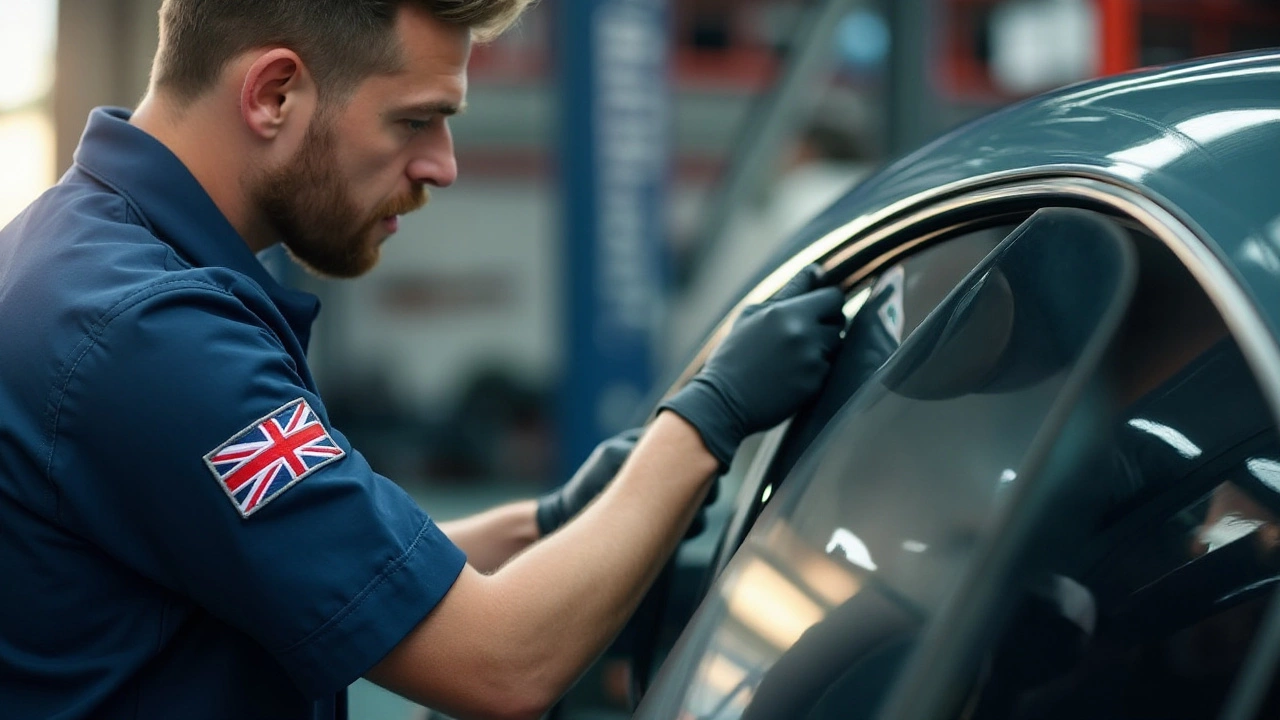
Maintaining Your Tinted Windows
Maintaining your window tint is crucial if you want it to last and continue providing the benefits you've invested in. While it might seem like a simple film slapped onto your windows, it requires care that respects its unique characteristics. Avoiding certain cleaning habits is essential since less forgiving ones can damage the film and reduce its effectiveness. For starters, using a soft cloth or a sponge is recommended when cleaning your tinted windows. This is because abrasive materials can scratch the tinted film leading to unsightly marks over time. So, keeping your windows pristine and clear takes just a little bit of vigilance and care.
It is important to understand that the cleaning solution you use plays a big role. Keep in mind that some cleaning products, especially those containing ammonia, can actually damage the tinted film. Ammonia can cause discoloration or even lead to the film peeling off. Stick to mild, ammonia-free cleaners, or better yet, opt for a solution that's specifically designed for cleaning tinted windows. It will be gentle enough to leave your tint in great condition without compromising its integrity. Rinsing the windows well after cleaning is recommended to ensure no residue is left behind, as even this can wear down the film over time.
Caring During Seasonal Changes
Cars experience substantial temperature variations throughout the year, and these fluctuations can affect your car tint. During summer, the high temperatures can make the tint more susceptible to peeling, especially if it's not maintained well. Be diligent with inspections during this time, checking for any edges or corners starting to lift. As colder months approach, they can bring their own set of challenges. Rapid cooling and condensation might stress the adhesive that keeps the film snug on your window. A useful tip is to periodically park indoors or in shaded areas to create a stable environment regardless of the season."Proper care helps prolong the life of your tint and maintains the pristine look you desire," says Jane Dewey, a seasoned window tint specialist with over 15 years in the field.
Another aspect of maintenance involves immediate repair of scratches or tiny tears you may notice. Ignoring them gives way for these small issues to become bigger, necessitating more costly interventions later on. Keep aware of small scratches from everyday items or wear and tear such as bags, car keys, or even seat belts being opened and closed carelessly. Having a minor repair done promptly can save you from replacing the tint entirely. These small efforts to maintain the tint not only keep the film intact but also ensure it stays within the legal standards of tint darkness.
One of the less obvious but important aspects of maintaining your tinted windows is to regularly check their integrity and functionality. Tints do much more than just provide privacy; they can act as a barrier against harmful UV rays and keep the interior cool. Over time, if the tint becomes damaged or starts showing signs of age, this protective layer may no longer perform its job as effectively. Pretty straightforward practices, like those shared, ultimately help maximize the lifespan of your window tint and keep your ride looking sharp and shaded for years to come.


